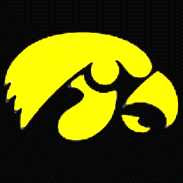Thursday, April 22, 2010
Goodnight Moon by: Margaret Wise Brown
Green Eggs and Ham by: Dr. Seuss
Final Reflection
Mid-Term Reflection
Love That Dog
A Year of Impossible Goodbyes
So Far From the Bamboo Grove
HOT HOT HOT by: Neal Layton
The Costume Copycat by: Maryann Macdonald
The Forgotten Forest by: Laurence Anholt
The Stupids Take Off by: Harry Allard-James Marshall
The Princess and the Peanut Allergy by: Wendy McClure
The Misfits
Monday, March 1, 2010
Kiki by: Hilda Perera
The Naked Lady by: Ian Wallace
If I Built a Car by: Chris Van Dusen
Max's Starry Night by: Ken Wilson-Max
Good Morning China by: Hu Yong Yi
A New House for Mole and Mouse by: Harriet Siefert
The Giver by: Lois Lowry
Wednesday, February 24, 2010
Billy the Kid by: Theodore Taylor
Trains by: Anne Rockwell
All Bout Sharks by: Jim Arnosky
How Many Teeth? by: Paul Showers
Australian Dinosaurs by: Marilyn Pride
The Great White Shark by: Carl Green & William Sanford
The Class Trip from the Black Lagoon by: Mike Thaler
Black Cat by: Christopher Myers
The Magic Rabbit by: Annette LeBlanc Cate
T-Rex Trick or Treats by: Lois G. Grambling
Out of the Ballpark by: Alex Rodriguez
This was a fascinating book written by professional baseball player Alex Rodriguez. It is a fictional story about winning his little league team a championship by hitting a game winning grand slam. It is interesting to see such a huge superstar writing a children’s book but also very cool. The illustrations are amazing and really kind to the eye. The best thing about the book was a note that Alex wrote to the readers at the end of the book. He talks about his commitment to baseball and also his hard work in school. He gives good advice like studying hard, staying away from drugs, and showing respect for his friends and elders. It is cool that he would mention those things instead of just talking about working hard on the baseball diamond. Another cool part of the book is the actual photographs of him and his family and friends at the end of the book. That kind of thing gives the reader a real sense of who the author is and makes the story seem more important and the author more concrete and realistic.
Snake Alley Band by: Elizabeth Nygaard
This was a nice book about a snake and his snake band. They really loved to be an all snake band but when he found himself without his fellow snakes and hearing noises from all different animals he didn’t think they sounded like a band. He rejected it because it didn’t sound like he was used to. But he was soon to realize that the noises the other animals made helped them sound different than everyone else and that different was good. The moral is that there can be many parts to make something different and unique and that can be a good thing. The illustrations were entertaining and also the noises that the animals make would be fun to sound out for a child. They would also be fun for an adult reading to a child to be able to be interactive with the child and also entertain them. This would be a great book to read to children when teaching about diversity and other issues that would go along with that.
